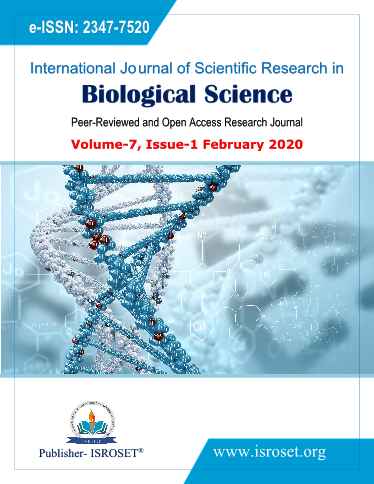A Study on Cadaveric Dry Skulls to Calculate the Incidence of types of Pterion in North-West Indians
Keywords:
Pterion, Sphenoparietal, Frontotemporal, EpiptericAbstract
Pterion is a small area present in the temporal fossa and is covered by temporal muscle and temporalis fascia. Pterion is formed on norma laterals where 4 bones greater wing of sphenoid, parietal, frontal, and squamous part of the temporal bone articulate with each other. The aim of present study is to calculate the incidence of different shapes of the pterion. This study was conducted on 108 human dry skulls in the Department of Anatomy, National Institute of Medical Sciences and Research, Jaipur. The following parameters Sphenoparietal, Frontotemporal, Epipteric and Stellate were observed in pterion and noted down in table format. The study was conducted on 108 human dry skulls and 216 types of pterion were observed where 133 sphenoparietal, 60 were frontotemporal type, 23 were epipteric type and no incidence of stellate type. Sphenoparietal type of pterion was the most dominant type of pterion which was observed in 61.57%of cases. This study will be helpful to anatomists, neurosurgeons, anthropologists and researchers. This study concludes that the knowledge of the position of pterion will be helpful for burr hole surgeries and neurosurgeries, anatomists, anthropologists and researchers.
References
S. Standring, “The anatomical basis of clinical practice” Gray’s Anatomy 40th Edition, chapter – head and neck, external features of skull. Churchill Livingstone Elsevier. London (UK). pp. 403, 412, 418, 2008.
O. Oguz, S.G. Sanli, M.G. Bozkir, R.W. Soames, “Pterion in Turkish male skulls” Surg Radio Anat. Issue.1, pp. 32-33, 2004.
P.M. Mwachaka, J. Hassanali, P. Odula, “Sutural morphology of the pterion and asterion among adult Kenyans” Braz J Morphol Sci. Volume.26, pp.4 – 7, 2009.
A. Zalawadia, J. Vadgama, S. Ruparelia, S. Patel, S.P. Rathod, S.V. Patel, “Morphometric Study of Pterion in Dry Skull of Gujarat region” NJIRM Volume.1, Issue 4, pp.25 – 29, 2010.
A. Wandee, C. Supin, C. Vipavadee, Y. Paphaphat, P. Noppadol, “Anantomical consideration of pterion and it’s related references in Thai dry skulls for Pterional surgical approach” J Med Assoc Thai. Volume.94, Issue.2, pp.205-214, 2011.
T. Murphy, “Pterion in Australia Aborigine” American journal of Physical Anthropology.Volume.14, Issue.2, pp.225 – 244, 1956.
S. Anjana. K.S. Satheesha, R. Bhaskar, “Morphometric study of pterion in adult dry skulls in Dakshina kannada district, Karnataka state, India” Int J Anat Res. Volume.3, Issue.4, pp.1603-1606, 2015.
A. Sindel, E. Ögüt, G. Aytaç, N. Oguz, M. Sindel, “Morphometric study of pterion” Int J Anat Res. Volume.4, Issue.1, pp.1954-1957, 2016. DOI: 10.16965/ijar.2016.119.
S. S. Hussain, Mavishettar, S. T. Thoma, Prasanna, P. Muralidhar, A. Magi, “Study of sutural morphology of the pterion and asterion among human adult Indian skulls’ Biomedical research. Volume.22, Issue.1, pp.73-77, 2011.
Downloads
Published
How to Cite
Issue
Section
License

This work is licensed under a Creative Commons Attribution 4.0 International License.
Authors contributing to this journal agree to publish their articles under the Creative Commons Attribution 4.0 International License, allowing third parties to share their work (copy, distribute, transmit) and to adapt it, under the condition that the authors are given credit and that in the event of reuse or distribution, the terms of this license are made clear.







